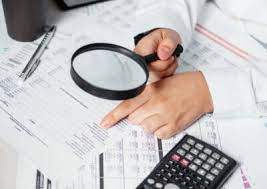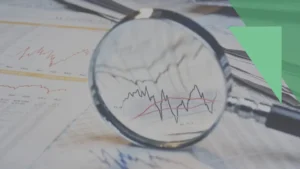Check fraud can wreak havoc on personal and business finances, making prevention crucial. By understanding common tactics and implementing proactive measures, you can safeguard against this threat. In this guide, we’ll explore effective strategies on how to prevent check fraud, ensuring your financial security and peace of mind.
To prevent check fraud, individuals and businesses should utilize security measures such as using high-quality checks with built-in security features like watermarks and security threads, storing checks in a secure location, regularly reconciling accounts, and monitoring bank statements for any suspicious activity. Additionally, consider using electronic payment methods whenever possible to minimize the risk associated with paper checks.
Regularly updating software and hardware systems to detect and prevent alterations or counterfeiting of checks is crucial. Lastly, fostering a culture of vigilance among employees and promptly reporting any suspected fraudulent activity to financial institutions can help deter and address check fraud effectively.
“A victim of fraud? No problem… Hire a professional today”
Importance of Preventing Check Fraud

Preventing check fraud is paramount due to its potential for financial loss, reputation damage, and legal repercussions. From direct monetary impacts to regulatory compliance and customer trust, the consequences of unchecked fraud can be far-reaching and detrimental to both individuals and businesses. Here is why preventing check fraud is crucial in more detail.
- Financial Loss: Check fraud can take various forms, including counterfeit checks, altered checks, and forged signatures. When fraudulent checks are successfully cashed or deposited, the victim suffers direct financial losses. For businesses, especially small businesses, these losses can be particularly devastating, potentially impacting cash flow, operations, and even the ability to meet financial obligations such as payroll or vendor payments.
- Reputation Damage: In today’s interconnected world, news of fraud incidents can spread rapidly, thanks to social media and online reviews. A business associated with check fraud may find it challenging to rebuild trust with customers, suppliers, and partners.
Customers may question the security of their financial transactions with the company, leading to a loss of clientele and revenue. Rebuilding a tarnished reputation can be a lengthy and costly process.
- Legal Consequences: Check fraud is a criminal offense in most jurisdictions, and perpetrators can face severe legal consequences, including fines, restitution orders, and imprisonment. Additionally, businesses and individuals may pursue civil remedies to recover their losses, leading to costly litigation. Legal expenses, coupled with the time and resources required to pursue legal action, can further compound the impact of check fraud.
- Disruption of Operations: Dealing with the fallout of check fraud can be disruptive to day-to-day business operations. Employees may need to dedicate significant time and effort to investigate fraudulent transactions, communicate with financial institutions and law enforcement agencies, and implement corrective measures to prevent future incidents.
This diversion of resources can hamper productivity and impede progress on other critical business objectives.
- Regulatory Compliance: Financial institutions are subject to stringent regulations aimed at preventing and detecting fraud, including check fraud. Compliance with these regulations is not only a legal requirement but also essential for maintaining the trust and confidence of customers and stakeholders. Failure to comply with regulatory requirements can result in penalties, fines, reputational damage, and even the loss of operating licenses.
- Identity Theft: Check fraud often involves the theft of personal or business information, which can be used to perpetrate identity theft. For example, fraudsters may obtain account numbers, signatures, and other sensitive information from stolen or intercepted checks.
This information can then be used to open fraudulent accounts, make unauthorized purchases, or commit other forms of financial fraud. Preventing check fraud is essential for protecting individuals and businesses from the far-reaching consequences of identity theft.
- Customer Trust: Trust is the foundation of any successful business relationship. Customers expect businesses to safeguard their financial information and protect them from fraud and identity theft. By implementing robust fraud prevention measures, businesses demonstrate their commitment to customer security and instill confidence in their brand.
Conversely, a failure to prevent check fraud can erode customer trust, leading to lost business and damaged relationships.
Preventing check fraud is essential for safeguarding financial assets, preserving reputations, complying with regulations, protecting against identity theft, and maintaining trust in the financial system. It requires a multi-faceted approach involving technological solutions, employee training, strict internal controls, and collaboration with financial institutions and law enforcement agencies.
How to prevent check fraud
Preventing check fraud involves a combination of vigilance, security measures, and best practices. Here are some steps individuals and businesses can take to minimize the risk of check fraud:
- Use Security Checks: Use checks with built-in security features such as watermarks, microprinting, or security threads. High-security checks are more resistant to tampering and counterfeiting.
- Secure Check Stock: Store blank checks in a secure location, such as a locked drawer or safe, and limit access to authorized personnel only.
- Monitor Accounts Regularly: Review bank statements, canceled checks, and online banking transactions regularly to detect any unauthorized or suspicious activity.
- Protect Personal Information: Safeguard personal and financial information, such as bank account numbers, routing numbers, and signatures. Shred documents containing sensitive information before disposing of them.
- Be Wary of Unsolicited Checks: Be cautious of unexpected checks received in the mail, especially if they’re from unknown or unfamiliar sources. Verify the legitimacy of the sender before depositing the check.
- Implement Positive Pay: Businesses can enroll in positive pay services offered by banks, which match the details of checks presented for payment against a list of checks previously authorized by the company. Any discrepancies are flagged for review.
- Use Secure Mail Services: When mailing checks, use secure and trackable delivery services to reduce the risk of interception or theft.
- Educate Employees: Train employees on how to recognize and respond to suspicious activity, such as unauthorized check requests, phishing emails, or social engineering attempts.
- Employ Dual Control: Implement dual control procedures for check handling, where multiple employees are required to complete and review tasks involving checks, such as issuing, signing, or reconciling them.
- Stay Informed: Stay informed about the latest fraud trends and tactics by regularly attending training sessions, seminars, or webinars conducted by financial institutions or industry experts.
- Update Security Software: Install and regularly update antivirus, antimalware, and firewall software on computers and networks to protect against malware and cyberattacks that could lead to check fraud.
- Report Suspicious Activity: Promptly report any suspected instances of check fraud to your bank, law enforcement agencies, and relevant authorities to take appropriate action and prevent further losses.
By implementing these preventive measures and maintaining a proactive approach to security, individuals and businesses can reduce their vulnerability to check fraud and safeguard their financial assets.
Types of Check Fraud

Check fraud can take various forms, each presenting different risks and challenges for businesses and individuals. Here are some common types of check fraud:
- Forgery: This occurs when someone alters a check by changing the payee’s name, the amount, or other details to benefit themselves. Forged signatures are also a common aspect of check fraud.
- Counterfeit Checks: Fraudsters may create counterfeit checks that appear genuine, using sophisticated printing techniques to replicate bank logos, watermarks, and other security features.
- Check Kiting: This involves taking advantage of the time it takes for a check to clear between banks. Fraudsters write a check from one account with insufficient funds and deposit it into another account, then withdraw cash or write checks against the deposited funds before the original check clears.
- Check Washing: In this method, criminals alter the details on a genuine check using chemicals or other methods to erase ink. They then rewrite the check to themselves or an accomplice for a larger amount.
- Remote Deposit Capture Fraud: With the popularity of mobile banking, fraudsters may exploit remote deposit capture technology to deposit fraudulent checks remotely, often using stolen or fake identities.
- Account Takeover: Criminals gain access to a legitimate account holder’s bank account information and use it to write fraudulent checks or make unauthorized withdrawals.
- Employee Fraud: Employees may misuse company checks for personal gain by forging signatures, altering payee information, or creating fake vendors.
- Identity Theft: Fraudsters may steal someone’s identity and open bank accounts or obtain checks in their name to commit fraudulent transactions.
- Phishing: Criminals use deceptive emails, phone calls, or websites to trick individuals or businesses into providing their bank account information, which they then use to commit check fraud.
- Insider Fraud: This involves individuals within a company conspiring to commit check fraud, such as colluding with vendors to issue fraudulent checks.
These are just some examples of the types of check fraud that can occur. It’s important for individuals and businesses to stay vigilant and implement appropriate security measures to protect themselves against these threats.
Common Methods Used by Fraudsters
Fraudsters are constantly evolving their tactics to exploit vulnerabilities and defraud individuals and organizations. Here are some common methods used by fraudsters:
- Phishing: Fraudsters send deceptive emails, text messages, or phone calls pretending to be from legitimate organizations to trick individuals into providing sensitive information such as passwords, credit card numbers, or social security numbers.
- Spoofing: Fraudsters manipulate caller ID, email addresses, or website URLs to appear as if they’re from a trusted source, such as a bank or government agency, to gain the victim’s trust and obtain sensitive information.
- Identity Theft: Fraudsters steal personal information, such as social security numbers, birthdates, or financial account details, to impersonate the victim and commit various forms of fraud, including opening fraudulent accounts or applying for loans in the victim’s name.
- Data Breaches: Hackers gain unauthorized access to databases containing sensitive information, such as credit card numbers or personal details, and sell or use this information for fraudulent purposes.
- Skimming: Fraudsters install small devices called skimmers on ATMs, gas pumps, or point-of-sale terminals to capture credit card or debit card information when the card is swiped or inserted.
- Account Takeover: Fraudsters gain unauthorized access to individuals’ or businesses’ online accounts by stealing login credentials through phishing, malware, or other means, allowing them to make unauthorized transactions or changes.
- Business Email Compromise (BEC): Fraudsters compromise business email accounts to impersonate executives or employees and trick other employees, customers, or vendors into making wire transfers or revealing sensitive information.
- Ransomware: Cybercriminals use malware to encrypt a victim’s files or entire computer systems, then demand payment, usually in cryptocurrency, in exchange for the decryption key needed to restore access to the files.
- Fake Check Scams: Fraudsters send counterfeit checks to victims as payment for goods or services, often for an amount higher than the agreed-upon price, and then request the victim to wire back the excess amount before the bank discovers the check is fraudulent.
- Investment Scams: Fraudsters promise high returns with little or no risk to lure individuals into investing money in fraudulent schemes, such as Ponzi schemes or fake investment opportunities.
These are just some of the common methods used by fraudsters. Staying informed about the latest tactics and implementing robust security measures can help individuals and organizations protect themselves against fraud.
Signs of check fraud
Recognizing the signs of check fraud is crucial for individuals and businesses to protect themselves against potential losses. Here are some common signs of check fraud to watch for:
- Unexpected Checks: Receiving unexpected checks in the mail, especially from unknown or unfamiliar sources, could be a sign of a fraudulent scheme. Be wary of checks that arrive with no clear explanation or legitimate reason.
- Altered Checks: Check for any signs of alterations, such as changes to the payee name, the written or numerical amount, or the date. Look for discrepancies in handwriting, ink color, or other irregularities that may indicate tampering.
- Unusual Account Activity: Monitor bank statements and online banking transactions for any unusual or unauthorized activity, such as checks written or cashed without your knowledge, withdrawals you didn’t authorize, or balances that don’t match your records.
- Forgery Signs: Check for signs of forged signatures, including differences in pen pressure, stroke pattern, or inconsistencies in the signature compared to known samples. Be suspicious if signatures appear shaky, hesitant, or overly uniform.
- Check Washing: Examine checks for signs of check washing, a process where the ink is erased to alter the payee, amount, or other details. Look for faded or blurry ink, changes in paper texture, or smudges that may indicate tampering.
- Unexplained Delays or Returns: If checks you’ve written experience unexplained delays in clearing or are returned for insufficient funds despite having enough money in your account, it could be a sign of fraudulent activity, such as check kiting or account takeover.
- Requests for Personal Information: Be cautious of requests for personal or financial information, especially if they’re unsolicited or come from unknown sources. Fraudsters may use phishing emails, phone calls, or text messages to trick individuals into revealing sensitive information that can be used for check fraud.
- Out-of-State or Overseas Transactions: Be vigilant of checks issued from out-of-state or overseas sources, especially if they’re for unexpected or unusual purposes. Fraudsters may use remote deposit capture or mail fraud to perpetrate check fraud across geographic boundaries.
- Pressure to Act Quickly: Fraudsters often pressure victims to act quickly by creating a sense of urgency or fear, such as threatening legal action or promising high returns. Be skeptical of any requests that require immediate action without proper verification.
- Inconsistencies in Communication: Pay attention to inconsistencies in communication, such as misspelled words, grammatical errors, or unusual language patterns, which may indicate fraudulent activity, particularly in emails or letters related to checks.
Recognizing these signs and remaining vigilant can help individuals and businesses identify potential instances of check fraud early and take appropriate steps to mitigate the risk of financial losses. If you suspect check fraud, report it to your bank and relevant authorities immediately for investigation and resolution.
Prevention Measures

Implementing preventive measures is crucial to minimize the risk of falling victim to check fraud. Here are some effective prevention measures individuals and businesses can take:
- Secure Check Stock: Store blank checks in a secure location, such as a locked drawer or safe, and limit access to authorized personnel only. Consider using high-security checks with features like watermarks, microprinting, or security threads to deter counterfeiting and tampering.
- Monitor Accounts Regularly: Review bank statements, canceled checks, and online banking transactions frequently to detect any unauthorized or suspicious activity promptly. Set up alerts for unusual account activity, such as large withdrawals or deposits, to receive immediate notifications.
- Use Positive Pay Services: Businesses can enroll in positive pay services offered by banks, which match the details of checks presented for payment against a list of checks previously authorized by the company. Any discrepancies are flagged for review before the checks are honored.
- Educate Employees: Train employees on how to recognize and respond to suspicious activity, such as unauthorized check requests, phishing emails, or social engineering attempts. Encourage them to verify the legitimacy of any unusual requests or communications before taking action.
- Protect Personal Information: Safeguard personal and financial information, such as bank account numbers, routing numbers, and signatures, to prevent identity theft and unauthorized access to accounts. Shred documents containing sensitive information before disposing of them.
- Implement Dual Control: Establish dual control procedures for check handling, where multiple employees are required to complete and review tasks involving checks, such as issuing, signing, or reconciling them. This reduces the risk of internal fraud and errors.
- Use Secure Mail Services: When mailing checks, use secure and trackable delivery services to reduce the risk of interception or theft. Avoid leaving outgoing mail containing checks in unsecured mailboxes for extended periods.
- Stay Informed: Stay informed about the latest fraud trends and tactics by attending training sessions, seminars, or webinars conducted by financial institutions or industry experts. Keep up-to-date with security best practices and implement them effectively.
- Update Security Software: Install and regularly update antivirus, antimalware, and firewall software on computers and networks to protect against malware and cyberattacks that could lead to check fraud. Enable multi-factor authentication for online banking and financial accounts for added security.
- Report Suspicious Activity: Promptly report any suspected instances of check fraud to your bank, law enforcement agencies, and relevant authorities to take appropriate action and prevent further losses. Provide detailed information and cooperate fully with investigations.
By implementing these prevention measures and maintaining a proactive approach to security, individuals and businesses can reduce their vulnerability to check fraud and safeguard their financial assets effectively.
Conclusion
When it comes to how to prevent check fraud, you have to be technical. Preventing check fraud requires a combination of vigilance, awareness, and proactive measures. By regularly monitoring your bank statements, securing your checks, and shredding sensitive documents, you can significantly reduce the risk of falling victim to check fraud.
Additionally, staying informed about the latest scams and maintaining open communication with your bank can help safeguard your finances. Remember, prevention is key, so stay alert and take the necessary precautions to protect yourself from check fraud.
